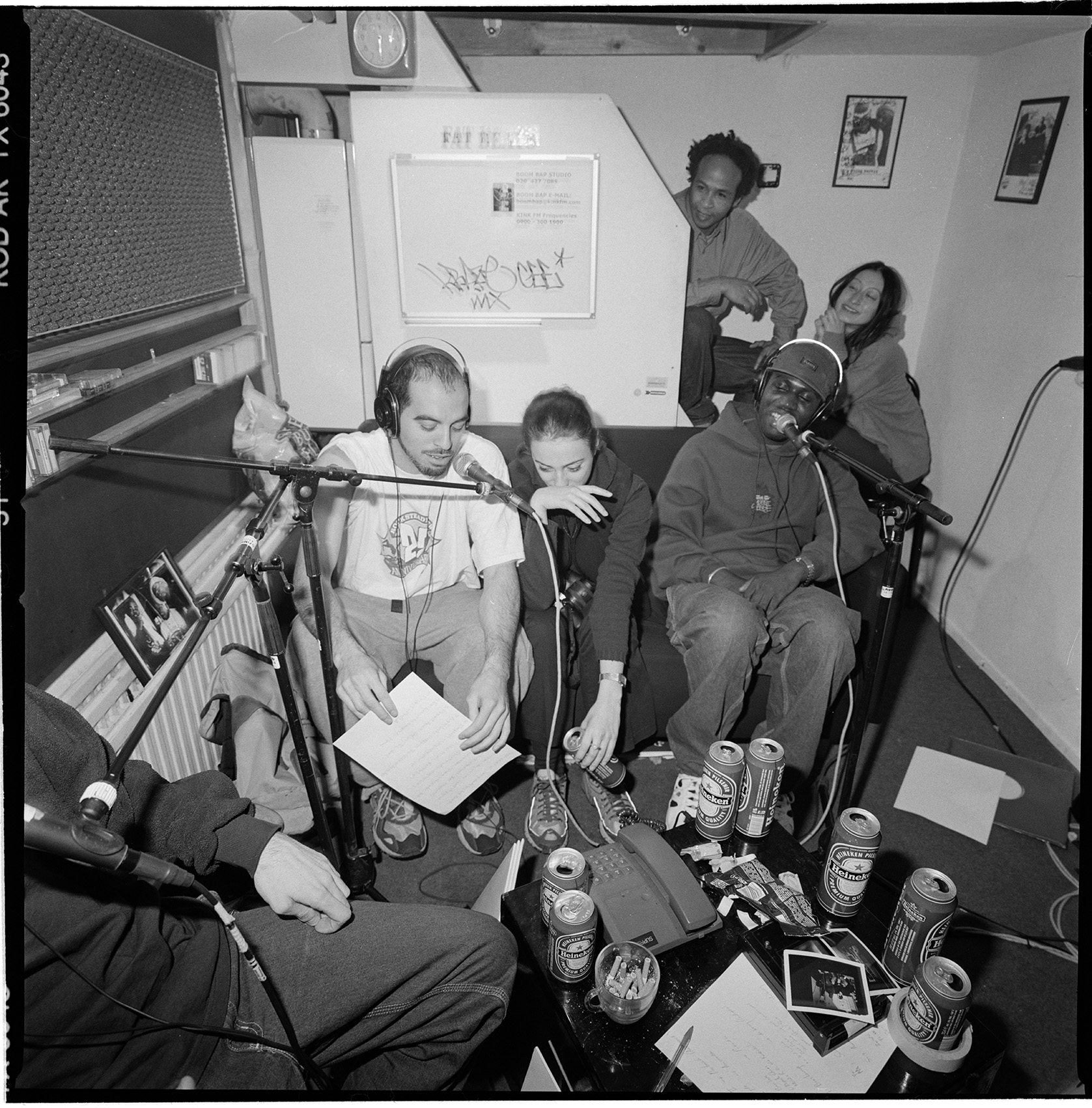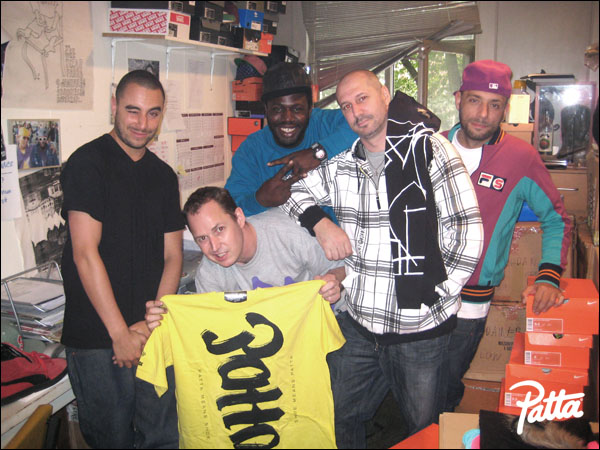Photo by Geert Broertjes
A BRIEF HISTORY OF THE BRAND
The two guys in the photo are Edson Sabajo and Guillaume 'Gee' Schmidt, the owners of the company. They met in the nineties through their mutual love for music, and Hip-Hop in particular. Being both of Surinamese descent, Patta is the word for Shoe in the Surinamese language, Sranan Tongo (fun fact: in Suriname, the word 'Pata' is actually spelt with one 'T', to ensure the proper pronunciation though, they opted for the double 'T'). Due to the large population of Surinamese people in the Netherlands, the expression blended into the youth's vocabulary and became part of their slang. In 2004 they opened the doors to the Patta store on the first floor of the Nieuwezijds Voorburgwal 142. At the time, most brands had split their catalogues by continent. This meant that America and Asia had different product lines than Europe did. Therefore, if you were to open a footwear store in a town like Amsterdam, you would have the same products as your competitors on the high traffic shopping street.
They didn't want that, they wanted to sell shoes that nobody had. The plan was simple: travel to other continents, hunt for hidden gems, buy in bulk and bring them back to the Netherlands. So they booked flights to New York, stayed with friends and mapped out which stores and streets they wanted to check. They would go to places like Fulton Street in Brooklyn, Jamaica Ave in Queens, or Fordham Road in the Bronx and go in, haggle, agree on a price, box it up and move on to the next shop. Not knowing anything about shipping accounts, the team would stuff shoeboxes into giant duffel bags and walk it through customs themselves. Or they used the US Postal Service and risked losing a box or two.
GEE & EDSON
Photo: Yamandu Roos
When the store opened its doors, all of our friends and family came by to celebrate and make purchases. Through word-of-mouth, the name rapidly spread like wildfire. Sales were going fast, but this also meant that the stockroom was getting emptier and more buying trips would have to be planned. The long hard grind had only just started.
Looking back at his teens, Guillaume feels like his biggest challenge was to stay true to himself and keep himself standing in the face of adversity. As a black kid living in a primarily white town like Den Bosch in the 80s, the physical and cultural differences were an inescapable fact. He looked different, he ate differently and most important: he thought differently too. For that, he credits his family for passing down the mental fortitude to accept and stand up for those differences.
Photo: Yamandu Roos
Born in Brownsweg, Suriname, his family moved to the Netherlands when Gee was two years old. His father, Humphrey, has always been culturally and socially active, working with refugees and protesting against social injustices. It is more common to do so now, but in the 80s and 90s, consistently speaking up against the use of blackface during each annual holiday season took courage and determination. Indifferent to being perceived as uppity or even worse, "ungrateful", father Schmidt made it a point to educate his children on the values of doing the right thing. And these are teachings that have stuck with his son over the years. His father is a soft-spoken, introverted man who thinks and deliberates before he speaks, and Gee was not much different.
Photo: Yamandu Roos
Gee's family was also responsible for his obsession with music. His parents frequently played Reggae or Soul music at home, and during family functions, they would play R&B and at some point: Hip-Hop. It was like love at first sight. He loved the way it sounded, but also the way the artists dressed and how confident and powerful they seemed to look. As a youth, Gee started playing basketball, and he proved to be pretty good at it too. Several of his teammates loved Hip-Hop as well, and they were very conscious of their footwear choices on and off the court. So, both basketball and Hip-Hop played a massive part in the way Gee dressed. Because the same shoes that he saw his favourite player wear on the courts, he saw his favourite artist wear in a music video.
Photo: Yamandu Roos
As a means of further expressing himself, he started playing his favourite songs on pirate radio with a group of friends. And to keep the repertoire fresh, Gee would often travel to cities like Utrecht or Amsterdam to buy records. It was at one of these record stores he met Edson.
Edson grew up in the infamous Staatsliedenbuurt in Amsterdam West. At the time a breeding ground for the city's criminals, Edson was keeping himself on the straight and narrow through his love for playing football and fear of his mother's switch. She would teach him and his two younger siblings that being black meant having to work twice -if not three times- as hard as his white friends. Sometimes this meant waking up earlier and travelling further to go to school in a safer area, but this also resulted in self-reliance, a DIY mentality, and an understanding and familiarity with the city. A very talented football player, outgoing and affable, Edson was infatuated with Hip-Hop from an early age. And he would try to express that in any possible way, by rapping with his friends, doing graffiti, breakdancing, and trying to DJ at his friend's house.
His sneaker addiction would go hand in hand with his love for Hip-Hop. When he was 16, he would watch a tape of the Boogie Down Production music video for My Philosophy over and over again. He would try to pause the VHS tape on the close up of KRS-ONE's shoes and figure out what they were and where he could buy them. He would then see that exact shoe again on the back of the Kid ’n Play album cover for 2 Hype.

In '89, Edson graduated from middle school, and his parents let him go to New York on holiday with a friend as a reward. They stayed at a family friend's apartment deep in Brooklyn, and he found out that these were the Air Jordan III, and they had sold out everywhere. They did, however, have the Air Jordan IV, so Edson settled on those instead. Back home, he proceeded to 'break necks' everywhere he went, prompting questions like "where'd you get those!?" regularly. Edson became known on the streets as that guy with the Jordans, and it was the best feeling ever. Before New York, he just wanted cool new shoes he saw his favourite rapper wear. But after New York, he became an actual sneakerhead.
Photo: Yamandu Roos
In the early 90s, Edson decided that DJ’ing was his favourite out of all the Hip-Hop art forms and focused on mastering the craft at Cafe de Duivel. See, back in those days, it wasn't common to hear Hip-Hop at bars or clubs. Hell, it was unlikely for you to be welcomed at some bars if you just looked different back then. So when de Duivel opened in '92, it became a haven for Hip-Hop fans and people of all colour and creeds ever since. Notorious for begetting a rather tough crowd, these training grounds would rapidly grow his skills as well as his reputation around town as a talented Hip-Hop DJ.
Photo: Yamandu Roos
THE POWER OF COMMUNITY
In 1996, the New York-based Fatbeats record shop expanded to Amsterdam and Edson quickly applied for a day job to get first dibs on all new incoming records. When he started working at Fatbeats, Edson joined a staff consisting of some of Amsterdam's best Hip-Hop DJ's. The Fatbeats squad was not well known for their excellent customer service or their patience, but they were infamous for their cockiness and their extensive Hip-Hop knowledge. That knowledge got put to the test when Edson met Gee.
By this time, Gee visited the Fatbeats store almost every other Saturday. On one of these visits in '99, the Arsonists new song Blaze was playing and the store team was discussing what sample they had used on the strings. Gee overheard the conversation and mentioned that it came from the soundtrack of the War of the Worlds musical. Edson baulked at the suggestion but had to admit defeat when they checked the facts. Having displayed his comprehensive knowledge of music to the Fatbeats team, Edson recognised a kindred spirit and brought Gee to de Duivel for drinks. They were sitting at the bar, talking shit and sharing beers and whiskeys, surrounded by friends.
It was the start of a strong friendship that later turned into an equally strong professional partnership. In four years, they would be sitting in those exact spots, having a conversation that would change both their lives.
Photo: Yamandu Roos
Around the time Gee went for drinks with Edson it was the latter part of the nineties, and he was studying International Leisure and Tourism Management in Utrecht. Feeling unsatisfied and disillusioned with the material, he quit school and also started working at Fatbeats. By this time, the Fatbeats store had already become a hub for local Hip-Hop heads. Besides Edson, the store team consisted of some of the city's most talented DJ's like Mr Wix, SP and Masta Lee, and they did radio shows, recorded mixtapes, and played at parties all around town.
Photo: Yamandu Roos
Gee himself started MC'ing and hosting at some of these parties. And even though Amsterdam is small, the Hip-Hop scene was growing, and it managed to connect a cluster of creative people through their shared nightlife experiences and love for music. These lifelong friendships and connections were not only made locally but internationally as well since many DJ's from overseas would visit and connect with their local counterparts. Eventually, this community would be the foundation on which Patta got built.
Photo: Yamandu Roos
At the beginning of the new century, Hip-Hop was becoming more and more mainstream. The rise of the internet revolutionized the distribution of music, CD's were slowly making way for MP3's, and the vinyl industry was suffering. The Fatbeats store was not doing very well, and most of the team quit one by one. Gee went to work behind the bar at de Duivel at first. Then, eager to turn one of his hobbies into a job, he took a position as a Junior Product Manager at Sony Music. However, the corporate look into the industry, the "strictly business" side of it all, and not being able to work with his friends made him question his choices. After two years, he understood this wasn't the type of job he wanted to spend his life doing.
One day in 2003, the two friends met at de Duivel for drinks, and Gee mentioned his dissatisfaction with his day job, and how he was thinking about starting something completely new. To his surprise, Edson said he felt the same way and suggested that they start something new together. He talked about his trip to China and mentioned the mountains of shoeboxes he saw. They both love sneakers; they know and understand them. Why not make this their business? The obvious next question was: how?
As you may recall in the previous chapter, Edson travelled to New York as a teenager to buy sneakers. Around '92, his younger brother Tim visited NYC with his mother, and they stayed at a B&B in Jamaica, Queens. Their host's son struck up a conversation with Tim, and they connected over their shared love for sneakers. He and his friends showed Tim all around town as they travelled by metro to hidden mom and pop shops in Fordham Road in the Bronx, Fulton Street in Brooklyn and Jamaica Ave in Queens. Far away from the relative safety of the Manhattan high streets, these stores had a lot more heat laying around, and for way better prices. So when Tim returned to Amsterdam with a bunch of neck breakers of his own, he suggested Edson save some money and come with him next year. Every time they went, they would add more and more of these streets and shops like they were drawing a treasure map. Over the years, they would bring many of their friends with them to New York to go shopping, and Gee was no different. By then, Gee had been to New York with Edson and Tim a few times before, and every time he would come back with gems. Furthermore, all of their friends wanted to have the shoes they came back with, so he knew there was a market for this. Therefore, when Edson suggested doing what they have been doing for themselves for years, but to do it for others in bulk, it all made more than sense to him.

Photo: Yamandu Roos
Both started writing down their ideas to set up a business plan. They decided on the name Patta as a proud reference to Suriname, as well as its street slang undertones. With help from their girlfriends and their large community of friends, they finished their business plan, and their friend Piet Parra made them a logo. After that, they needed a bit of starting capital to rent a space, tickets to New York, and stock buying budget. So they booked meetings with banks to apply for a business loan. Unfortunately, most banks were not interested in giving them one, except for the Rabobank. The bank looked over the plan, saw potential and congratulated them, as they would be giving Edson and Gee their start-up capital. Elated, they found a three-story building on the Nieuwezijds Voorburgwal and signed the lease contract. The day after the signing, the bank reached out to say that that loan didn't get approval after all. They had no start-up capital to get their business off the ground, and now, they also had rent to pay.
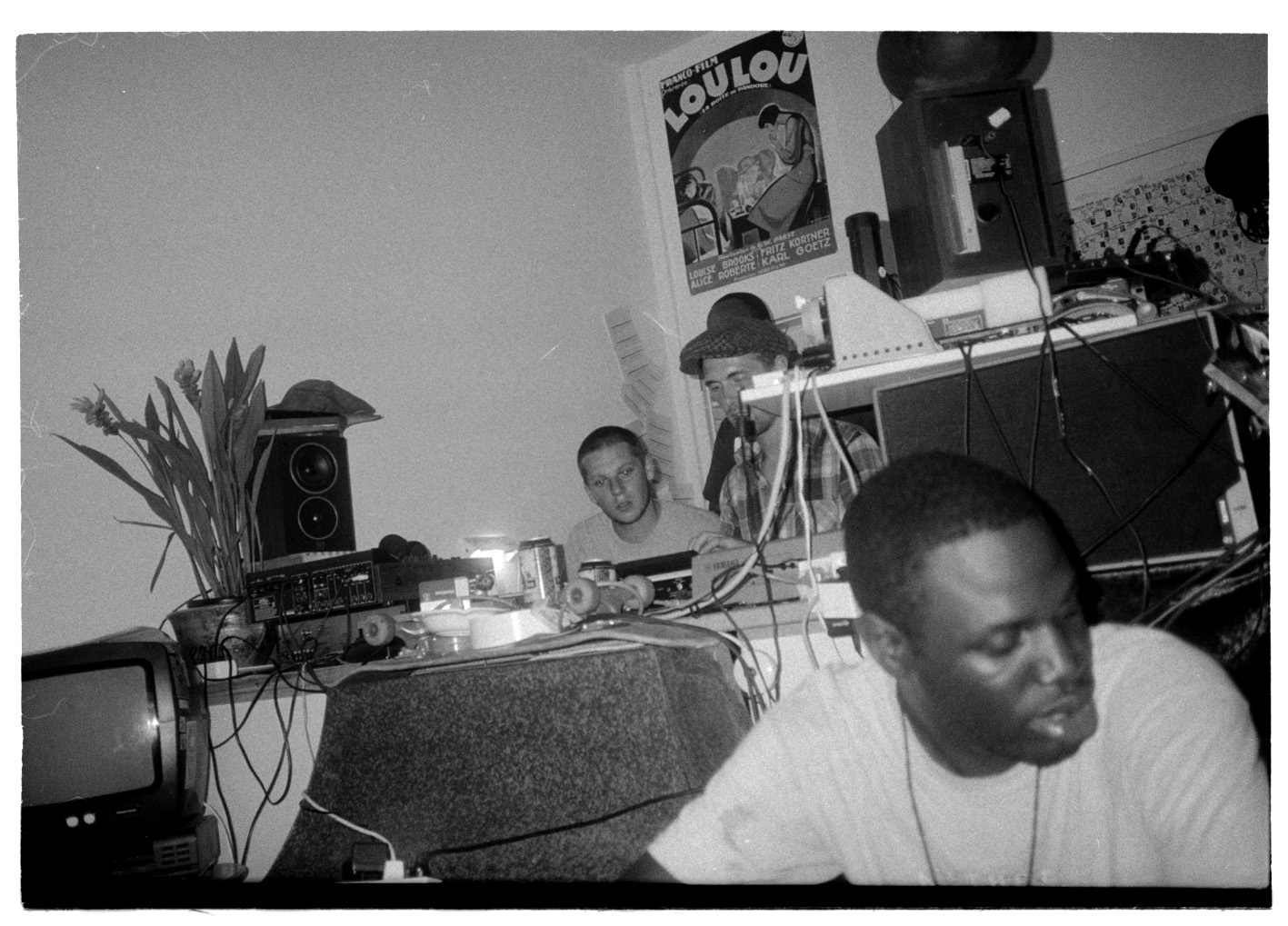
Photo: Yamandu Roos
That night, after spending the day crying their eyes out on the floor of the building that they now couldn't afford, they were drinking their sorrows away at de Duivel. In came their good friend Dirk, a patron of the cafe, and he noticed their sad faces and hanging heads, so he asked them what happened. After the explanation, Dirk considered the situation and said that he might be able to help. His father was in the pharmaceutical industry, lived on a farm in Belgium, and he might be willing to invest in their business. So, Edson, Gee and Dirk drove to his farm the next day to show him the business plan and make a pitch. They passionately explained their objectives and how they were to go about it, after which Dirk's father pushed their business plan away without looking at it. He said that they had been such good friends of his son for ages and that they had been there for Dirk when he was going through hard times. He asked them: "How much do you need?" Edson told him the requested amount. He contemplated for a second and said: "I can give you half." Without hesitation, Edson replied: "We'll take it." And they signed a contract to pay the amount back to him, within four years with no interest.
After several weeks of preparation, flying back and forth to New York on buying trips, carrying giant duffle bags filled with sneakers, the store opened to much fanfare and support from their community. The business was thriving, and Edson & Gee paid off that loan within three years.
THE EARLY YEARS
Starting up as a sneaker store, wholly dependent on parallel buying trips with no official accounts, the lifespan of the initial Patta business plan was finite from the beginning. Over the years, many stars managed to align via sheer force of will, planning, but also by random chance.

In the first few years, the team was going to different places like New York, Philadelphia, LA, Paris and Tokyo almost four or five times a year. Through conversing and socializing with their suppliers, everywhere they went, their contact book kept expanding. Through their life-long experience with the product and its culture, Edson & Gee knew first-hand which shoes to bring back to the Netherlands. With help from Edson's brother Tim, and later addition Max, they picked out models that they liked, or they were several years old and about to make a comeback. While the risks were high of bringing back a brick (a non-moving sneaker), this was all part of the game, because the consequences of striking gold were worth it twice over. Because making money is one thing, but from a branding perspective, Patta was making a name in the industry. Scoring gold meant putting sneakers out on the streets and in public view that weren't even in production anymore. Which means that if brands were paying attention to what happened on the streets, they could, in turn, profit from reissuing these products. This awareness and insight would play a significant factor a few years later.
In the first few years, the team was going to different places like New York, Philadelphia, LA, Paris and Tokyo almost four or five times a year. Through conversing and socializing with their suppliers, everywhere they went, their contact book kept expanding. Through their life-long experience with the product and its culture, Edson & Gee knew first-hand which shoes to bring back to the Netherlands. With help from Edson's brother Tim, and later addition Max, they picked out models that they liked, or they were several years old and about to make a comeback. While the risks were high of bringing back a brick (a non-moving sneaker), this was all part of the game, because the consequences of striking gold were worth it twice over. Because making money is one thing, but from a branding perspective, Patta was making a name in the industry. Scoring gold meant putting sneakers out on the streets and in public view that weren't even in production anymore. Which means that if brands were paying attention to what happened on the streets, they could, in turn, profit from reissuing these products. This awareness and insight would play a significant factor a few years later.

Meanwhile, the local community continued to support, and the Patta store became the beating heart of youthful creative energy in town. Exclusive sneakers and streetwear finally had a home base in Amsterdam, and word-of-mouth was spreading rapidly about this shop that wasn't like any other. Rappers, DJs and other artistic friends were hanging out on the couch, talking and laughing with the staff, while Hip-Hop was blasting through the speakers. Some of these friends even stayed and made it their home, as Mr Wix set up a studio in the back, Ben-G opened a skate shop on the ground floor, and Piet Parra set up a desk in the top floor office. A longtime friend and talented visual artist, Piet created the Patta script logo that they printed on small batches of t-shirts for friends & family. These always sold out so fast, and eventually became the catalyst for the Patta clothing line. With help from their friends in the music industry, they also set up mixtapes with features from some of the Netherlands' most popular Hip-Hop artists. Team Patta was bringing the noise, and the power of the internet was amplifying.
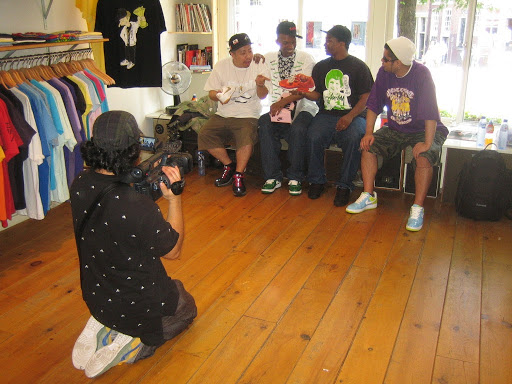
The late '00s saw globalization at a never-before-seen scale thanks to the growth of the internet. Dial-up modems became a thing of the past, as broadband was finally readily available for the general public. Comfortably able to connect with like-minded individuals around the world without the need for travel, the sneaker community started taking note of each other's existence and flocked towards each other like magnets. Masta Lee, fellow sneakerhead and one of the more tech-savvy DJ's with whom Edson worked at Fat Beats, joined the team and managed the first Patta website and its content. Products were available to order via email, and the worldwide community grew closer, attributing to the rapid spread of the Patta name worldwide.
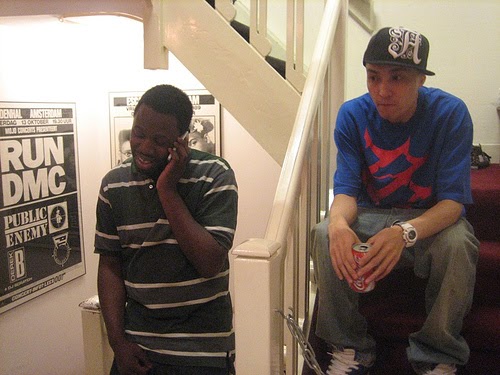
Moreover, the name also started ringing in brand offices around the world. Because high street competitors in the city saw these little troublemakers selling shoes that they couldn't get, they began raising questions to their account managers. These brand representatives were in a precarious position because the shoes in question weren't in their brand's catalogue offering, nor could they stop Patta from buying products out of their supposed jurisdiction. Since Patta was not the only entity to operate in these atypical methods, brands started mobilizing to stop these "agitators". However, as mentioned earlier, these individuals were the influencers of a community that engrosses themselves in their brand's particular products. So instead of stopping them, brands started working towards embracing these parties by way of collaboration. They moved away from the continental allocation model to a tiered exclusivity pyramid, which allotted exclusive styles to culture- and community-driven doors like Patta, while offering mainline products in bulk to the high street stores.
All of the brands eventually met with Patta to present them an account and to officially bring them into the fold, but the actual first one to do so was ASICS. The account managers at the time were already friends of the team, but the account they offered was not very impressive yet. To sweeten the pot, ASICS offered a collaborative sneaker project on a model of Patta's choosing. The decision fell on the Gel-Lyte III, a model from the '90s that had fallen into obscurity, but was one of ASICS most accessible styles as it featured the performance capabilities that the brand was famous for, and also pushed the boundaries in terms of fashionability. Without any knowledge of Pantone colours, the team drew inspiration from the city of Amsterdam, and Masta Lee put it all together on a CAD. Besides the shoes, they also replaced the shoebox with a matching backpack. And after some back-and-forth, a greenlit sample and a mapped out release date, the first pictures hit the internet.

It exploded, and the email inbox started flooding. Four days in advance, sneakerheads drove from Germany, Switzerland, Belgium and France to sleep in front of the store and obtain a pair. ASICS made about 300 pairs, and approximately 400 people were waiting in line. Since it was the first time people were queuing for sneakers in Amsterdam, the police were a bit worried, but the vibe was generally good. The media also caught wind of it and came by to ask the team for interviews. Edson made an exclusive deal with a local news station that gave them entry to the shop during the launch, in exchange for putting the piece on the daily news. This way, it would be broadcast multiple times per day instead of once during coffee hours.
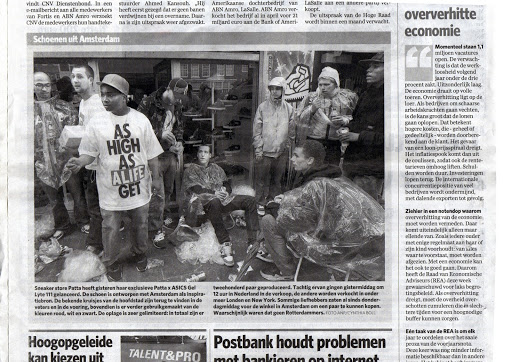
After this first successful collaboration, many brands eventually offered Patta their highest accounts available. Sneakers were becoming more popular and accessible by the day, and the landscape was rapidly changing. Growth was apparent, and many collabs soon followed.
The Patta x ASICS Gel-Lyte III launched in 2007, three years into the history of the company. In 2009, for the fifth anniversary, Patta collaborated with Nike to launch five Air Max 1s and caused further madness in the world of sneakers. At this point, there are queues in front of the store almost every other month. Patta is flying high and the potential seems limitless. So expansion plans are quickly put into motion, and the new Precinct 5 store opened in 2010.

Located on the top floor of an old police station (hence the name), Precinct 5 was a concept store stocking high-quality streetwear labels like Neighborhood, Bedwin and the Heartbreakers, Nike NSW and Stussy. While idealistic in its pursuit of bringing these brands to the Amsterdam market, the combination of its hard-to-find location, the high price tags on most items, and several other internal issues made managing the two businesses separately very difficult. In 2012, as a last-ditch effort, the decision was made to merge the two companies and run the Patta store from the Precinct 5 location. Unfortunately, when Precinct 5 declared bankruptcy several months later, the Patta store was forced to close as well.
THEN AND NOW
Without a store to make any money from, we ran the webshop from a small stockroom provided to us by our friends from Ben-G. At the same time, we looked around for a new location to reopen the store somewhere in the centre of Amsterdam. While multiple options were available, the decision fell on a small rundown former barbershop on the Zeedijk in the Redlight District. We would need to do a lot of remodelling, but the location was perfect.

Around the same time that we founded Precinct 5 however, we made another investment, which was the founding of our own clothing line. When we started officially working with all of the big footwear brands, we started buying their products from them directly. But, this would make us very dependent on what these brands were offering us to purchase, so our independence would greatly diminish unless we became a brand ourselves. This is how the Patta Original Clothing label was founded. Starting with a small collection for Spring Summer 2011, both the production, logistics and distribution proved to be challenging new ventures, but they were vital decisions in the long term. Over time, we learned from the process and the many mistakes we made along the way. So when we reopened the store on the Zeedijk in late 2012, the clothing line was starting to get up and running and was ready to pave the way into the future.

Since then, we established flagship stores in London (2016) and Milan (2019) without any outside investments, and we opened pop-up shops in New York, Tokyo, Seoul, Bangkok and Shanghai to expand our unique retail experience across the borders of the Netherlands. We founded the Patta Running Team to promote running as a means to achieve and maintain physical and mental health within ourselves and help teenagers do the same with an endeavour called Patta x ROCva Youngsters. We collect all of our musical exploits under one Patta Soundsystem banner to effectuate projects that profess our undying love for music. We collaborate with museums like Het Hem or OSCAM to encourage and promote the importance of the arts. We do independent lectures and organise the Patta Summerschool (with OSCAM & MadiZO) to guide young adolescents in entrepreneurship and talent development. We established the Patta Foundation to raise money for charities and organisations that fight against social or economic injustices that are near and dear to us. And we’re nowhere near to being done.
It has been a recurring theme over the past couple chapters, but our independence is one of the most important aspects of our business. After Precinct 5, the team, led by Edson and Gee, vowed to prioritize the protection of that independence over anything. And while we have expanded over the years, growing from a two-man squad to a diverse team of 50 people, each one plays an integral role in the advancement of the brand, company and its positioning in this world. But as a black-owned company, being able to make our own decisions, to hire who we want, to fund our own ventures and expansions, to pick projects based on moral or environmental reasons instead of straightforward economics, these things mean the world to each of us. And it's worth the every day struggle for.

From the bottom of our hearts, we thank you for taking the time to read all of the Get Familiar chapters if you did. We never took the time to actually write all of this stuff down either, so for us, it's been very therapeutic as well! We appreciate your patronage and your interest in the brand, and we hope to have informed you a bit about our story.
Much love,











